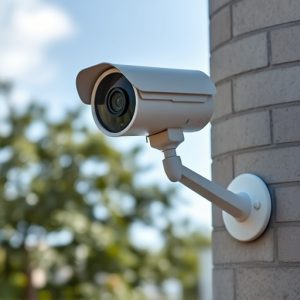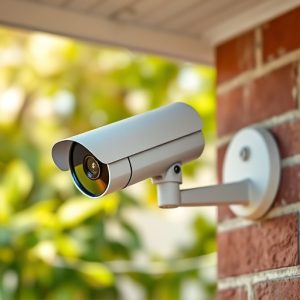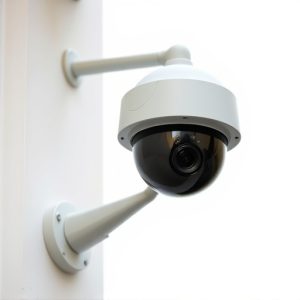Dummy Camera Deterrents: Effectiveness, Installation Tips, and Future Trends
Dummy cameras are powerful psychological deterrents for property security, most effectively placed i…….
Dummy cameras are powerful psychological deterrents for property security, most effectively placed in high-risk areas like entry points, rooftops, and parking lots where their visible presence reduces crime. For public spaces, focus on historically criminal or anti-social zones like dark alleys and building entrances. Strategic positioning, lifelike appearance, and regular maintenance maximize their deterrent effect. Research shows dummy cameras significantly reduce crime in high-crime areas, with future advancements in AI and 3D printing promising even more effective security solutions.
In an era where security is paramount, dummy camera deterrents have emerged as a cost-effective solution for public spaces. This comprehensive study delves into the effectiveness of these visual deterrents, exploring their role in crime prevention. We examine best practices for installing dummy cameras, drawing from successful case studies across diverse environments. Using key metrics and rigorous research methodology, we assess their impact on criminal activity, offering insights into the best places to deploy them for optimal security.
- Understanding Dummy Camera Deterrents: A Comprehensive Overview
- Best Practices for Installing Dummy Cameras in Public Spaces
- Case Studies: Successful Implementation of Dummy Cameras in Different Environments
- Evaluating Effectiveness: Key Metrics and Research Methodology
- Future Prospects: Trends and Innovations in Security Camera Technology
Understanding Dummy Camera Deterrents: A Comprehensive Overview
Dummy camera deterrents have gained significant attention as innovative security solutions, offering a visible deterrent to potential criminals. These devices are designed to mimic real cameras, providing an effective psychological barrier. Understanding their placement and strategic use is key to maximizing their effectiveness. The best places to install dummy cameras include high-risk areas like entry points, rooftops, and parking lots, where their prominent display can deter burglars and vandals.
By strategically positioning these fake cameras, businesses and homeowners can create the illusion of enhanced surveillance, significantly reducing the likelihood of criminal activity. This approach leverages the power of perception, as would-be perpetrators are less likely to attempt an action if they believe they are under constant watch.
Best Practices for Installing Dummy Cameras in Public Spaces
When considering where to install dummy cameras in public spaces, it’s crucial to choose locations that maximize their deterrent effect. The best places are often areas prone to crime or anti-social behaviour, such as dark alleys, parking lots, and entry points to buildings. Strategically placing these decoys can act as a psychological barrier, deterring potential criminals by suggesting heightened security.
For optimal effectiveness, dummy cameras should be clearly visible but realistic in appearance. Mounting them at eye level or higher on posts or structures increases their impact. Additionally, ensuring they are regularly maintained and cleaned to maintain their lifelike appearance is essential for ongoing success in deterring crime.
Case Studies: Successful Implementation of Dummy Cameras in Different Environments
In various environments, dummy cameras have proven to be an effective deterrent for real security measures. Case studies from urban areas show that installing dummy cameras in high-crime neighborhoods significantly reduced criminal activities, providing a safer environment for residents. Business districts and shopping malls have also seen success with this strategy, as dummy cameras deterred shoplifters and increased overall business security.
Moreover, dummy cameras have been effectively implemented in residential areas to prevent burglaries and vandalism. Their strategic placement can act as a psychological barrier, encouraging potential offenders to choose less conspicuous targets. Best places to install dummy cameras include entry points, windows, and commonly targeted areas, offering a cost-effective solution for enhancing security without the need for extensive physical barriers or constant surveillance.
Evaluating Effectiveness: Key Metrics and Research Methodology
Evaluating Effectiveness: Key Metrics and Research Methodology
When assessing the deterrent effectiveness of dummy cameras, several critical metrics are considered. These include crime rates before and after installation, type and frequency of crimes affected, as well as any changes in behavior observed among potential offenders. The research methodology involves a comparative study between areas known for high crime rates and those identified as best places to install dummy cameras. Data collection methods include police records analysis, community surveys, and interviews with local law enforcement agencies.
This comprehensive approach ensures that the impact of dummy cameras is measured accurately, taking into account both qualitative and quantitative data. By comparing crime statistics over a defined period, researchers can determine if dummy cameras significantly reduce criminal activities in the best places for installation. This study methodology provides valuable insights for understanding the effectiveness of this strategy in various settings, guiding future decisions on where to best deploy such devices for maximum security benefits.
Future Prospects: Trends and Innovations in Security Camera Technology
As technology advances, security camera systems are evolving rapidly. Future prospects in this field look promising with emerging trends setting new standards for both physical and digital security. One notable trend is the integration of artificial intelligence (AI) and machine learning capabilities into cameras, enabling them to recognize faces, detect unusual behaviors, and even predict potential threats. This level of sophistication can significantly enhance the effectiveness of dummy camera deterrents, as AI-powered systems could differentiate between genuine and fake surveillance equipment.
Additionally, the development of more advanced and realistic dummy cameras themselves is on the horizon. Innovations in materials science and 3D printing technology may lead to creating foolproof replicas that are virtually indistinguishable from real security cameras. Understanding the best places to install these dummy cameras—such as high-crime areas, critical infrastructure sites, or sensitive corporate facilities—will be key to leveraging their potential. This strategic placement, combined with cutting-edge technology, could revolutionize security measures and provide an extra layer of protection for both individuals and organizations.
In conclusion, dummy camera deterrents have proven to be an effective security measure in various public spaces. By understanding their mechanics, best practices for installation, and evaluating key effectiveness metrics, we can harness their potential to enhance safety without excessively impacting community ambiance. As technology advances, trends like AI-integrated cameras and innovative design options will further elevate their deterrent capabilities, making them a valuable asset in modern security strategies, particularly in identifying the best places to install dummy cameras for optimal results.


